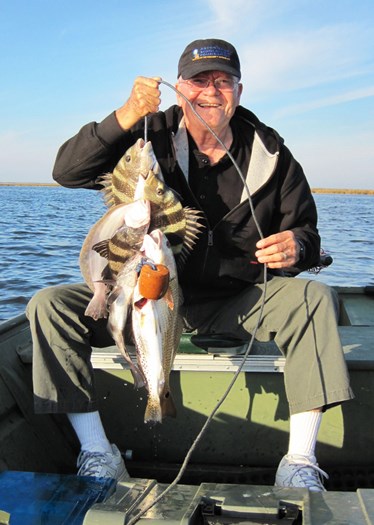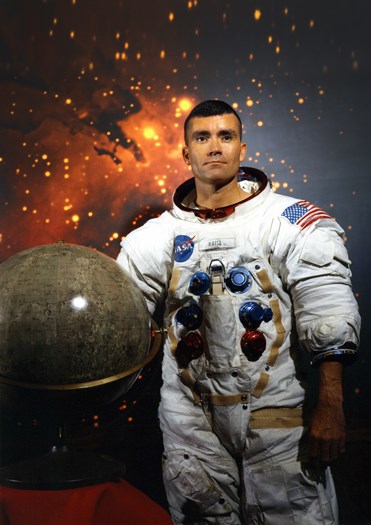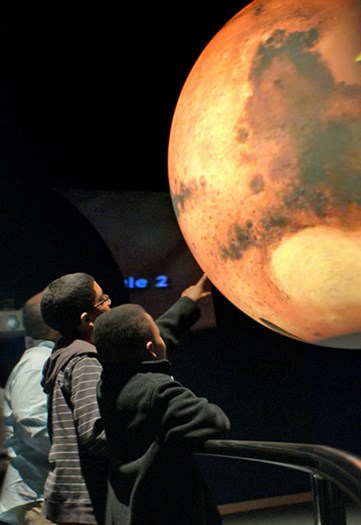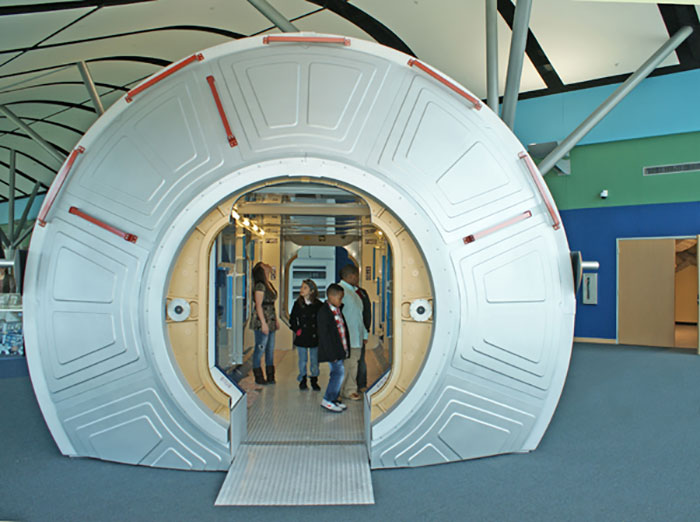BILOXI, Miss. - For someone who’s had so many out-of-this-world travel experiences, Fred Haise seems happiest with his feet planted firmly on the ground in Biloxi, where he grew up and first dreamed of going to the stars.
“I’m really a hometown boy,” says Haise, a former astronaut who was a member of NASA’s ill-fated Apollo 13 mission in 1970. On that flight the now-famous words, “Houston, we’ve had a problem here” (later changed for dramatic effect by Hollywood to “Houston, we have a problem”) were uttered by command module pilot John Swigert. Haise and mission commander James Lovell were the other crew members on that troubled flight.
Now retired, Haise, 80, keeps active through his involvement in the John C. Stennis Space Center and its newest attraction, the Infinity Science Center, which Haise helped get off the ground, so to speak.
“I am involved in the Board and fundraising, primarily for the benefit it would offer children,” says Haise, who feels right at home walking among the vintage capsules and rockets now on display at the $42 million interactive space museum which really is out of this world.
Haise is often asked about the Apollo 13 flight, whose story was made by director Ron Howard into a blockbuster movie starring Tom Hanks as Lovell. Bill Paxton portrayed Haise.



Left: Now Haise likes to fill his time with fishing. Middle: Fred Haise was one of the earliest space pioneers. Right: Thanks to Haise, young people can dream about space at the Mississippi centre.
“Despite the fact that Ron Howard upped the drama (in the film) with arguments between the three of us — which never happened — the movie served a purpose in demonstrating team work and what training does when you have to cope with what seems like insurmountable problems,” says Haise.
The problems on the jinxed Apollo 13 began when an oxygen tank exploded.
“At first, it didn’t appear to be an extreme emergency,” remembers Haise. “But when we realized we had lost one tank, the severity of the situation hit us. John (Swigert) radioed Houston immediately, saying ‘Houston, we’ve had a problem here’.”
Those words, uttered with amazing calm, galvanized world attention on the crippled spacecraft and the three men inside who floated helplessly 300,000 kilometres above Earth. For three days, the Apollo 13 crew struggled to stay alive without electricity, light or water while the world watched in horror.
However, with the expert precision that comes from years of training and the ability to think creatively under pressure, Mission Control experts in Houston pulled together a rescue plan. Haise’s dream of a moon landing was rendered impossible, but, using the moon’s gravity, the astronauts were returned home safely.
Haise left NASA in 1979 to work for a private aerospace company, thus ending a remarkable career that began when he flew in a plane at 18 after enrolling in the Naval Aviation Cadet program at college.
“I instantly loved flying,” says Haise with a sparkle in his eyes. “I knew it would be my life in some way. Back then, there was no such thing as a space program. So I decided to be a test pilot.”

Above: Mock ups of the international space centre are on display.
Haise, via video, greets you when you enter Biloxi’s Space Center, which is where all of NASA’s rockets have been tested since the 1960s. The Space Gallery is filled with space memorabilia: a shuttle, space suits and a full-size laboratory module of the International Space Station.
A visiting high school class from Louisiana checks out the components of a shuttle rocket engine. They beam with excitement, perhaps dreaming of exploring space themselves one day.
Paul Foerman, NASA exhibits manager, jokingly tells them, “You can’t go to space without going through Mississippi.”
Foerman believes the Infinity Center will eventually be one of the premier science centres in the United States and “much of the credit for that goes to Fred Haise, who works tirelessly to ensure its success.
“Fred is an amazing person.”
When Haise was growing up, Biloxi was a quiet little town of 14,000 with a prosperous fishing industry, oyster shell streets, few tourists and no beaches.
“We used to fish right off the sea wall,” says Haise, whose city has grown to more than 40,000 permanent residents and attracts hordes of tourists thanks to its man-made beaches, casinos and some of the South’s best restaurants.
“Despite the changes, it still feels like coming home because the area where I grew up still looks the same,” says Haise, who splits his time between homes in Texas and Biloxi.
Haise says that he had hoped to get a glimpse of his hometown during the Apollo 13 flight.
“But we only made two passes over the Gulf Coast, travelling at 25,000 mph (about 40,000 km/h). Both times, we were too busy working,” he says.
While space journeys may be well behind, Haise says he still likes to travel, with Switzerland (“for its storybook beauty”) and Rome (“because it is so steeped in history”) along with Iceland’s lunar likeness and southern Mississippi’s bayou beauty topping his favourite list of places.
Still on his bucket list?
“Australia and New Zealand,” says the man who likes to spend time on quiet lakes fishing.
Haise takes both a pragmatic and philosophical approach to the subject of space tourism.
“If you’re talking about a rocket that goes up 60 miles and comes right back down, I don’t think there’s much of a market because of the astronomic cost involved,” he says. “However, the more people who make the trip, the better.
“From space, there’s no discerning barrier between one country and another. There are no politics. Perhaps it would make us settle in better on this little itty bitty plot we call Earth.”
If Haise is disappointed that the problems with Apollo 13 prevented him from becoming the sixth man to walk on the moon, he hides it well.
“It was so long ago,” he says. “I was fortunate to have the experience I did and more fortunate to return alive.”
Thanks to Haise’s involvement with Biloxi’s Infinity Science Center, mere Earthlings can enjoy the marvels of space without ever leaving our planet.
Information
• The Center is located on the Mississippi Gulf Coast, off Interstate 10 at MS exit 2. • It’s open Monday – Saturday 10 a.m. to 4 p.m. • NASA bus tours run from 11 a.m. to 3 p.m., on the hour.• New exhibits include: Neil Armstrong’s training space suit, a Rolls Royce Trent 1000 air craft engine and a Kids Zone Playground. • Admission: $10: Adults (Age 18-54)$8: Senior Adult (55+), $6 Military / Children (4-17), Ages 3 and under FREE. • More information at:
www.visitinfinity.com